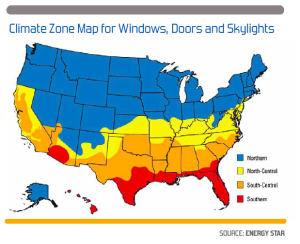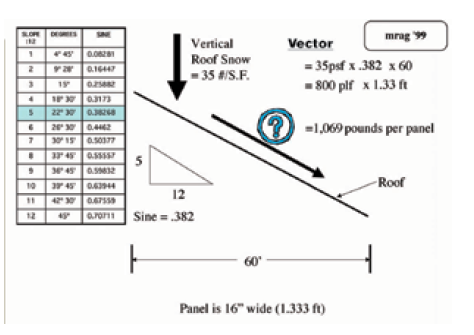Age and Condition: Will your existing roof structure support additions, like roof monitors or skylights? Existing beams can be allowed to pass directly under roof penetrations with minimal daylighting performance impact and at a reduced cost compared to more substantial structural alterations. Given the age and condition of the building, perhaps it’s time to invest in performance renovations or seismic upgrades. Depending on the nature of the retrofit, the slight increase in structural upgrade required to support roof augmentations may be synergistic and cost-effective.
Building and Occupancy Type: Understanding a building’s existing structural system, envelope, occupancy and scheduling is critical for taking advantage of design and construction synergies in any building-performance upgrade, especially for roof penetrations. When looking at a building holistically, conditions that may typically be thought of as a waste or liability now can be considered for their potential as a resource when utilizing roof monitors. For example, buildings with a high number of occupants and/or equipment often require air conditioning even in a cooler climate. These buildings would greatly benefit from monitors to reduce cooling load.
Cost Balancing
Now that the building’s local climate and existing conditions are understood, these design synergies can be woven into life-cycle cost analyses to determine the true cost and benefit of roof-penetration retrofits. The extra design effort that goes into capturing passive resources and offsetting ongoing operating costs is a fraction of the construction cost. Therefore, the value of spending the extra upfront time conducting climatic, building condition and costing analysis cannot be overstated.
To fully understand the cost/benefit of performance upgrades,it’s important to chart the upfront costs and energy consumption of each building system. For example, if monitors’ passive resources can be utilized to solve many of the heating/cooling problems, HVAC equipment can be reduced in size or even eliminated. The financial resources previously slated for HVAC equipment and ongoing air-conditioning tonnage expenditures can be reallocated for roof penetrations. If monitors can be designed to mount solar-electric systems at an angle to optimize sun exposure, less PV and racking is needed, which also can drastically reduce costs.
In addition, consider who is paying for building renovations and operations. If the person paying for the renovation is not paying for ongoing operations, then a cost increase for the system may not be worth it. However if the renovation financier will reap the benefits of ongoing operational savings, this should weigh heavily in upgrade decisions.
Another consideration is the ongoing performance of the roof monitors, especially in terms of when and how they are operated. A simple building automation system (BAS) that notifies occupants when the monitors should be opened or closed is a successful strategy. This system requires a weather station that monitors the outside temperature and the climate. When the weather station communicates action is required to maintain optimal building thermal performance, it sends a notification through the BAS to the end-user.
In addition, by involving building occupants in the operation of the monitors, they will become actively engaged in the building’s performance. This engagement and understanding of performance could encourage them to get involved with other building-optimization efforts, like turning off unused lights. Involving occupants is also a cost-saving feature to eliminate the need for expensive automated motorized window operators.
By thoroughly analyzing a building’s climatic design, existing conditions and renovation cost/benefit, you can determine the viability of rooftop penetrations as a building performance and value enhancer. Always remember that with any building retrofit or upgrade, rooftop-penetration options should be carefully researched and designed to determine the best solution for initial and ongoing performance.




Be the first to comment on "Rooftop Alterations, Like Skylights and Roof Monitors, Can Drive Building Value and Performance"